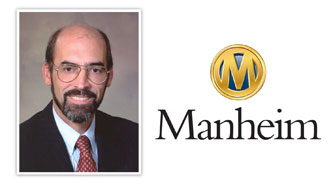3 Retail Businesses That Offer Glimpse Toward Used-Vehicle Sales Potential

Manheim chief economist Tom Webb gave some examples of retail sectors that might give a “true sense of the psyche of many used-vehicle buyers.”
So what kinds of business should dealers watch besides traffic to their own stores? Webb recommended that managers concentrate on specific businesses and retail sectors, most notably Walmart, dollar stores and casual dining restaurants.
“First-quarter results and second-quarter guidance from all of these sectors suggest that the financial health and confidence of most used-vehicle buyers is improving only slowly,” Webb said in the May Auto Industry Brief produced by Manheim Consulting.
“At Walmart, North American same-store sales declined for the first time in seven quarters and the CFO stated ‘our customers are still stretched,’” Webb continued. “Results for casual dining establishments were, at best, lackluster.
“We expect that the spending power and confidence of most used-vehicle buyers will remain relatively subdued,” he went on to say. “After all, the biggest recent improvements in the economy have concentrated in the equity markets and home values. That helps higher-income households (new-vehicle buyers), but mainstream America needs faster growth in weekly incomes.”
Webb offered more general economic commentary in the brief, again taking a cautious approach as the United States slowly creeps out of the recession.
“The near term outlook for the economy appears to be clear sailing, but don’t interpret that too optimistically — it will be “sailing,” not motor boating. In fact, a better expression would probably be ‘smooth rowing’ since many business sectors will have to keep on working — and with some degree of synchronization — to keep the economy moving ahead.
“And, given the outsized influence of the Federal Reserve, it could be said we have a coxswain that not only gives commands to the rowers, but also alters the river currents,” he continued. “That, as noted last month, makes it difficult for economists to call the outcome of the race.”
Webb went on to mention that the pace of new-vehicle sales leveled off as expected in April, also noting signs that retail used-vehicle sales may be doing the same.
“Nevertheless, the flow of funds into retail financing remains impressive and that will keep used-vehicle sales at a healthy level. Wholesale used vehicle prices declined again in April, but the movement was neither unexpected nor disruptive to the market,” Webb said.
And speaking of credit, Webb touched on another potential troublesome point when answering a question about the swelling number of student loans.
“Throughout the recession and even during the current recovery, consumers have delevered. credit card debt, which use to be the biggest form of non-mortgage debt, peaking at $866 billion in the fourth quarter of 2008. It now stands at $660 billion,” Webb said.
“Auto debt peaked at $820 billion in late 2006, fell to $710 billion during the recession, and now stands at $794 billion,” he continued.
“Meanwhile student loan debt escalated over the past decade without even a hiccup during the recession. Student loan debt outstanding, which was $241 billion in 2003, is now nearly $1 trillion,” Webb concluded.
Continue the conversation with Auto Remarketing on both LinkedIn and Twitter.

 View The Latest Edition
View The Latest Edition

